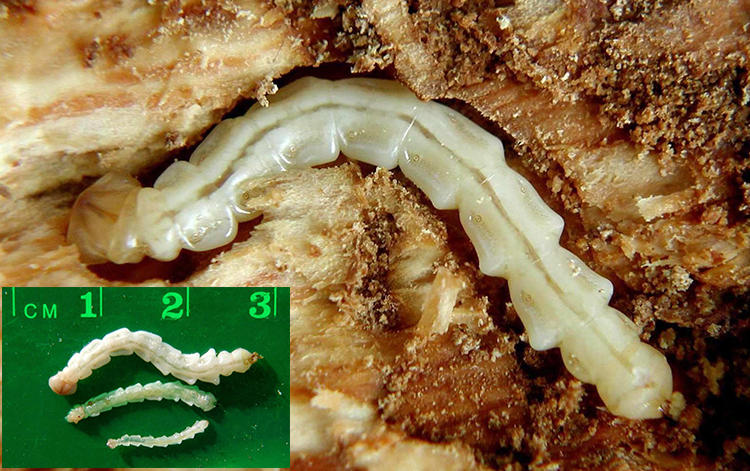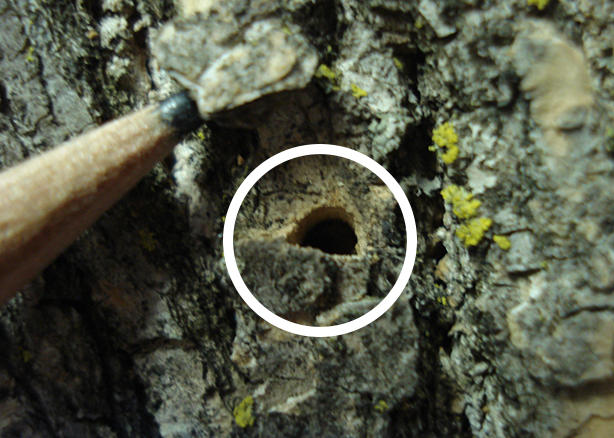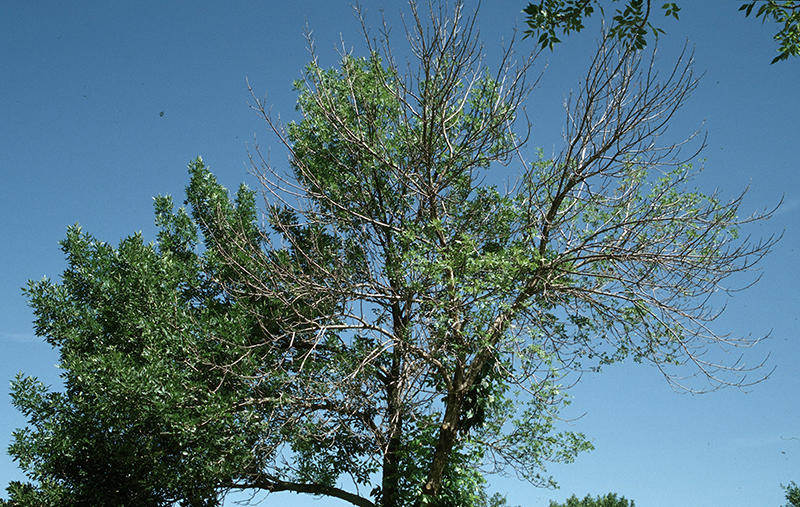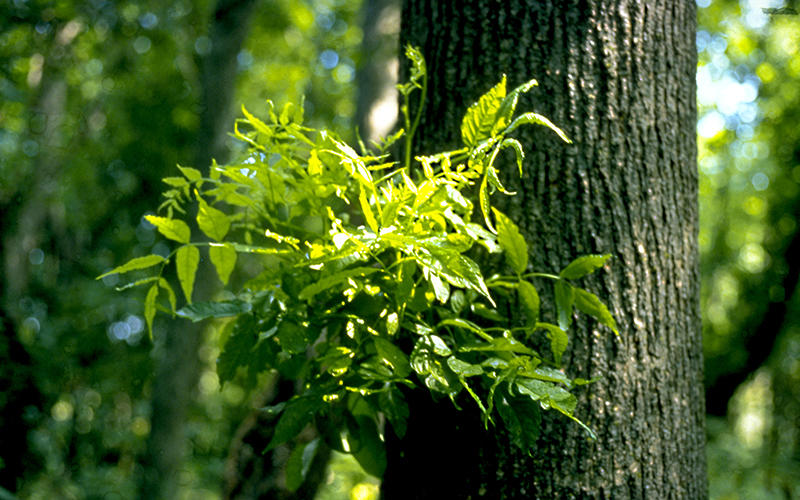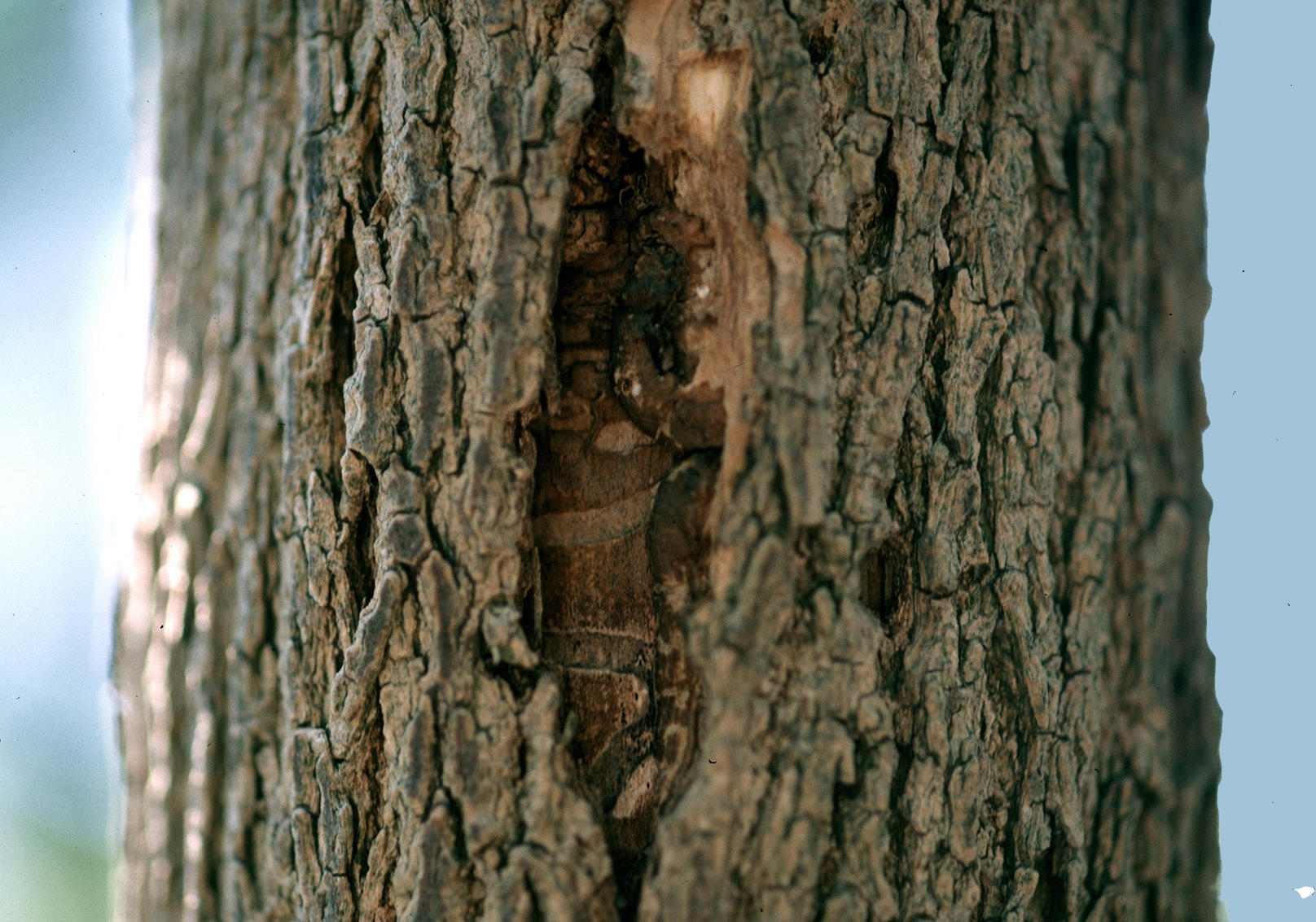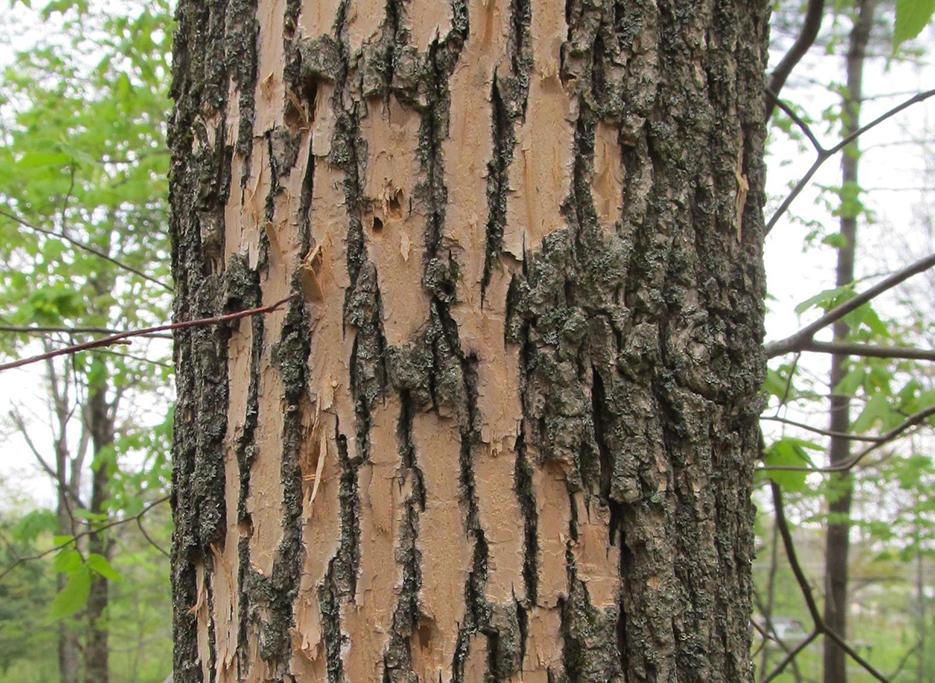The emerald ash borer (EAB) is an invasive insect from Asia. It was first found in the United States in 2002. It has now spread across the eastern U.S. and as far west as Colorado, and has killed hundreds of millions of ash trees. EAB is spread primarily by the transport of nursery stock and firewood. It has been found in Oregon, and all ash trees in Oregon cities and forests are at risk. Once established, EAB is very difficult to control. By keeping an eye out for EAB, you can help protect trees and forests in Oregon.
Insect identification
Adult: 7.5 to 13.5 mm (0.3 to 0.5 inch) long, slender, and metallic olive to emerald green; active June through July
Larva: 2.6 to 3.2 cm (1 to 1.3 inches) long, creamy white, with bell-shaped segments; found under the bark throughout the year; causes damage to the tree by eating tissue below the bark
Hosts
Ash (Fraxinus spp.) Ash in Oregon is primarily found in cities and towns as landscape trees and in natural riparian forests throughout the Willamette Valley.
White fringetree (Chionanthus virginicus)
Signs and symptoms
- Significant crown dieback in heavily infested trees (starts in top third of the crown)
- Sucker shoots emerging from the trunk or base of the tree
- Woodpecker activity that gives bark a distinct mottled appearance
- D-shaped holes in the bark about 3 mm (0.1 inch) in diameter
- Splitting bark
- S-shaped galleries underneath the bark
- Adults visible in summer
What to do if you suspect EAB
Help the Oregon Department of Agriculture manage EAB by reporting what you see.
- File a report with the Oregon Invasive Species Hotline, or call 1-866-INVADER.
- Include photos of the surrounding environment, the whole tree, and any signs, symptoms, or insects.
- Take note of the exact location of your detection and include it in your report.
- If you suspect you have found an adult or larval EAB, collect it in a crushproof container, label the container with the date and location, and put the container in a freezer.
Once you file a report, someone may contact you to ask questions about your detection or arrange a site visit. If you are unable to file a report yourself, give the information to a supervisor or other trusted person to report.
For more information
Oregon Forest Pest Detector Field Guide (EM 9127), Oregon State University Extension Service.
Oregon Forest Pest Detector (more information on EAB and other high-priority forest pests).

